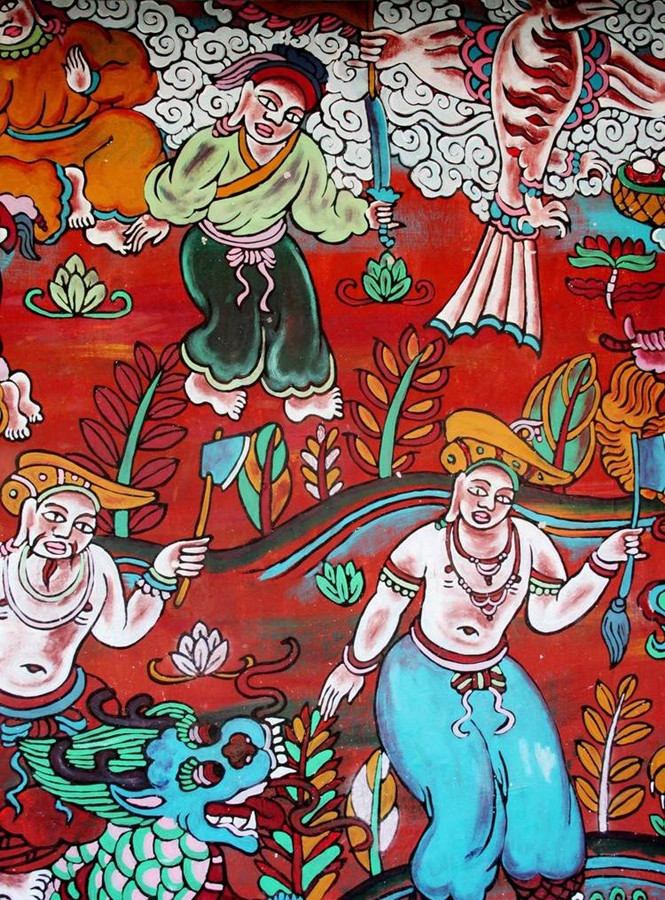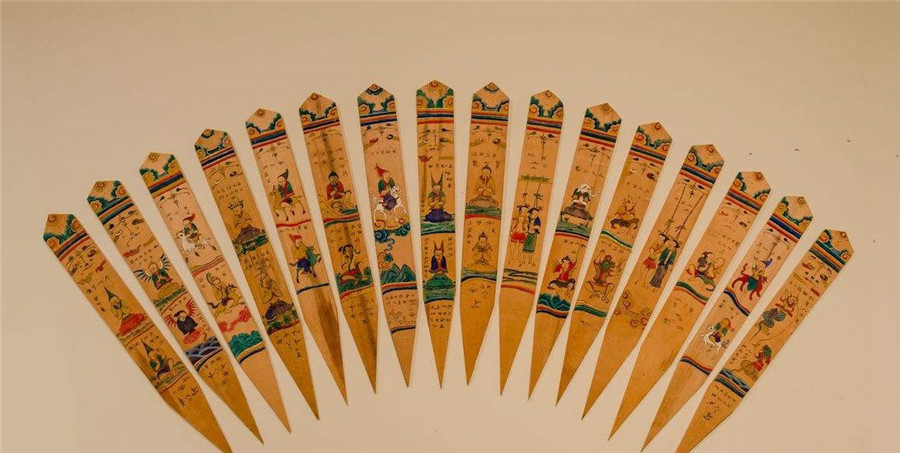Dongba Painting in Lijiang
Introduction to Dongba Painting
Dongba painting is one of the most important components of Naxi Dongba culture and is considered the oldest form of religious painting among the Naxi people. It is a unique and distinctive art form that reflects the religious beliefs, social life, and cultural heritage of the Naxi people. The center of Dongba painting is in the Naxi region of Lijiang City, Yunnan Province. In 2006, Naxi Dongba painting was listed as a national intangible cultural heritage by the Chinese government.
Historical Background
The origins of Dongba painting can be traced back to the primitive pictographs used by the ancestors of the Naxi people for shamanistic rituals. These pictographs gradually evolved into both the Naxi pictographic script and Dongba painting. Over time, Dongba painting was influenced by various religious traditions, including Tibetan Bon, Tibetan Buddhism, and Han Chinese Taoism. As Dongba religion developed, Dongba painting also matured and was passed down through generations of Dongba priests.
Artistic Features
Subject Matter
Dongba paintings depict a wide range of subjects, including deities, spirits, ancestors, animals, plants, and scenes from daily life. They often reflect the Naxi people’s reverence for nature and their belief in the harmony between humans and the natural world. One of the most famous examples is the “Sacred Road to Heaven” painting, which is approximately 14 meters long and 0.26 meters wide. This painting depicts the journey of a soul from the human world to heaven, passing through various realms.
Artistic Style
Dongba paintings are characterized by their:
-
Strong and vivid colors: The use of primary colors such as red, yellow, and blue makes the paintings visually striking.
-
Dynamic and expressive lines: The lines in Dongba paintings are bold and fluid, capturing the essence of the subjects.
-
Combination of text and image: Many Dongba paintings include both pictographs and illustrations, reflecting the close relationship between Dongba script and art.
Forms of Dongba Painting
Dongba paintings take several forms:
-
Scroll paintings: These are long, narrative paintings that tell stories through a series of images.
-
Wooden tablet paintings: These are smaller paintings on wooden tablets, often used in religious rituals.
-
Paper card paintings: These are small, decorative paintings on paper, often used for ceremonial purposes.
Cultural Significance
Dongba paintings are not only works of art but also important cultural and historical documents. They provide valuable insights into the religious beliefs, social customs, and daily life of the Naxi people. As a “living fossil” of human primitive painting art, Dongba paintings are a crucial resource for the study of ancient cultures.
Today, Dongba paintings continue to be an important part of Naxi culture. They are preserved and displayed in museums and cultural centers in Lijiang, such as the Lijiang Folk Handicraft Art Museum. Local artisans also create modern interpretations of Dongba paintings, ensuring that this ancient art form remains relevant and alive.
Dongba painting is a testament to the rich cultural heritage of the Naxi people and a unique contribution to the world of art.



 7 Days GolfingTour
7 Days GolfingTour
 8 Days Group Tour
8 Days Group Tour
 8 Days Yunnan Tour
8 Days Yunnan Tour
 7 Days Shangri La Hiking
7 Days Shangri La Hiking
 11 Days Yunnan Tour
11 Days Yunnan Tour
 6 Days Yuanyang Terraces
6 Days Yuanyang Terraces
 11 Days Yunnan Tour
11 Days Yunnan Tour
 8 Days South Yunnan
8 Days South Yunnan
 7 Days Tea Tour
7 Days Tea Tour
 8 Days Muslim Tour
8 Days Muslim Tour
 12 Days Self-Driving
12 Days Self-Driving
 4 Days Haba Climbing
4 Days Haba Climbing
 Tiger Leaping Gorge
Tiger Leaping Gorge
 Stone Forest
Stone Forest
 Yunnan-Tibet
Yunnan-Tibet
 Hani Rice Terraces
Hani Rice Terraces
 Kunming
Kunming
 Lijiang
Lijiang
 Shangri-la
Shangri-la
 Dali
Dali
 XishuangBanna
XishuangBanna
 Honghe
Honghe
 Kunming
Kunming
 Lijiang
Lijiang
 Shangri-la
Shangri-la
 Yuanyang Rice Terraces
Yuanyang Rice Terraces
 Nujiang
Nujiang
 XishuangBanna
XishuangBanna
 Spring City Golf
Spring City Golf
 Snow Mountain Golf
Snow Mountain Golf
 Stone Mountain Golf
Stone Mountain Golf














